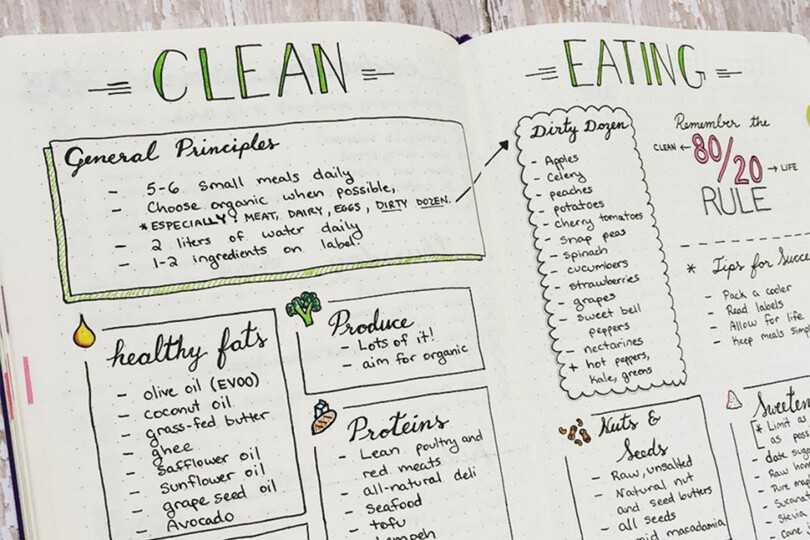Keeping a food journal can have a big impact on diet and health goals — studies have shown that doing it consistently can actually double a person’s weight loss. After the holidays, this tool could provide the push you need to really kick start your January health resolutions.
The practice is super simple to do — all you need to do is write down what you eat, and how you feel before, and after — but it’s not easy. Keeping a food journal is an exercise in self-awareness. The more information you record, and understand, around your eating habits and patterns, the better you’re able to see what makes you fall off track, and how you might support yourself instead. No hacks, here – food journals are a tough-love approach to supporting yourself in achieving your own diet goals. Ready to give it a shot? Check out this five-step intro to food journaling.
Step 1: Start with your intention
As in: your “why.” Why do you want to keep a food journal? What’s your specific end goal? To check your portion sizes? To reduce your sugar intake, or increase your daily consumption of fruits and vegetables? Makeover your relationship with food? Start by getting super clear on how you hope your journal will work for you, and break it down into specific goals if it’s a biggie.
Step 2: Decide on what you need to record day to day
While the basic function of a food journal is to track what you eat, how much, and when, the numbers alone likely aren’t enough to help you really get to the bottom of emotional hunger cues or other unhelful patterns. If you want to gain insight into your relationship with food so you can create healthy habits, you’ll need to record some emotional data, too. Some possibilities for “data” to record include:
- Times / portion sizes of meals and snacks
- How you feel before, during and after you eat
- Context (why you may have missed a meal, etc.)
- Environment
- Physical feedback
- People you’re with
- How slow or fast you eat
Of course, you’re not writing in your food journal simply to write — you’re writing so you can come up with a plan to help you achieve your goal. So match your daily methods to your goal — if tracking something like fat grams, for example, doesn’t feel relevant to you, don’t do it. Only track what you need to. And if you need to track number-heavy information, consider using an app in conjunction to your journal. (Check out My Diet Coach app, or the very visual See How You Eat app.)
Step 3: Find a structure that works for you
There’s no “wrong way” to format a food journal, but there are definitely some options for formats that might make the process feel easier for you. Pinterest has a wealth of templates you might use for inspiration or print out. If you find you don’t find you feel more supported by an organized template, you could just buy a blank notebook and write day by day, line by line. When choosing a structure, aim to support yourself in making writing in your food journal instinctive to write in.
Step 4: Track data for two weeks
After you’ve recorded two weeks of data, sit down with your journal and take an honest, judgement-free look at your patterns. The goal is to see how you can best support yourself — not get down on yourself. Ask yourself:
- When do you tend to ditch your eating plan or healthy intentions?
- What emotional or physical states bring out your inner saboteur?
- How does work effect your diet?
- How do your choices change when you’re with others?
- Why do you eat when you’re not hungry?
- When do you allow yourself too get too hungry?
- Do your perceptions match reality?
Answer these questions by having a thorough look at your data. Trace steps back throughout your data to identify the root causes of the times you veer off track. You don’t need to have all the answers. Starting by just bringing your awareness to these answers is the real power of a food journal.
Step 5: Come up with your action plan
Based on your insights and your desired goal, (where you’re at now, and where you want to be), what kind of diet plan would be the best support to you? Do you need to come up with some hard and fast rules for yourself (closing your kitchen after 8 pm, or always eating protein for breakfast, for example) in addition to a structured healthy meal plan to rely on? Identify what you need and where you might go to get it. If you’re still unclear, continue tracking data in your journal until you’re confident you do know.
*This article originally appeared on our sister site, BeautyDesk.com.












